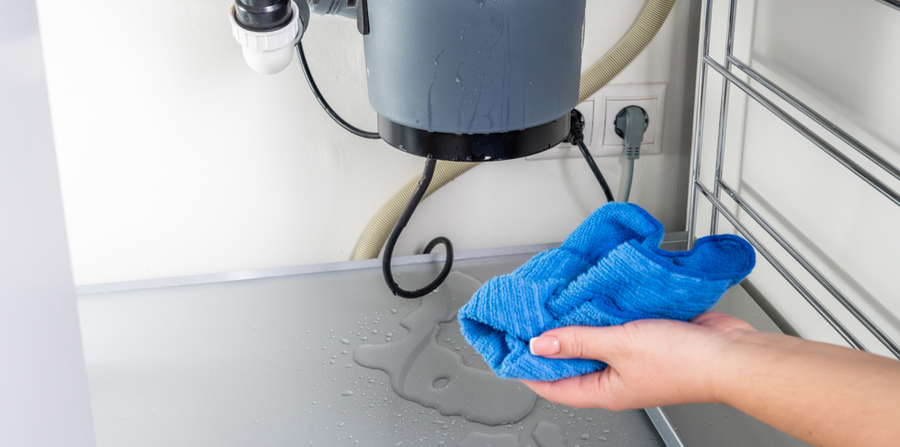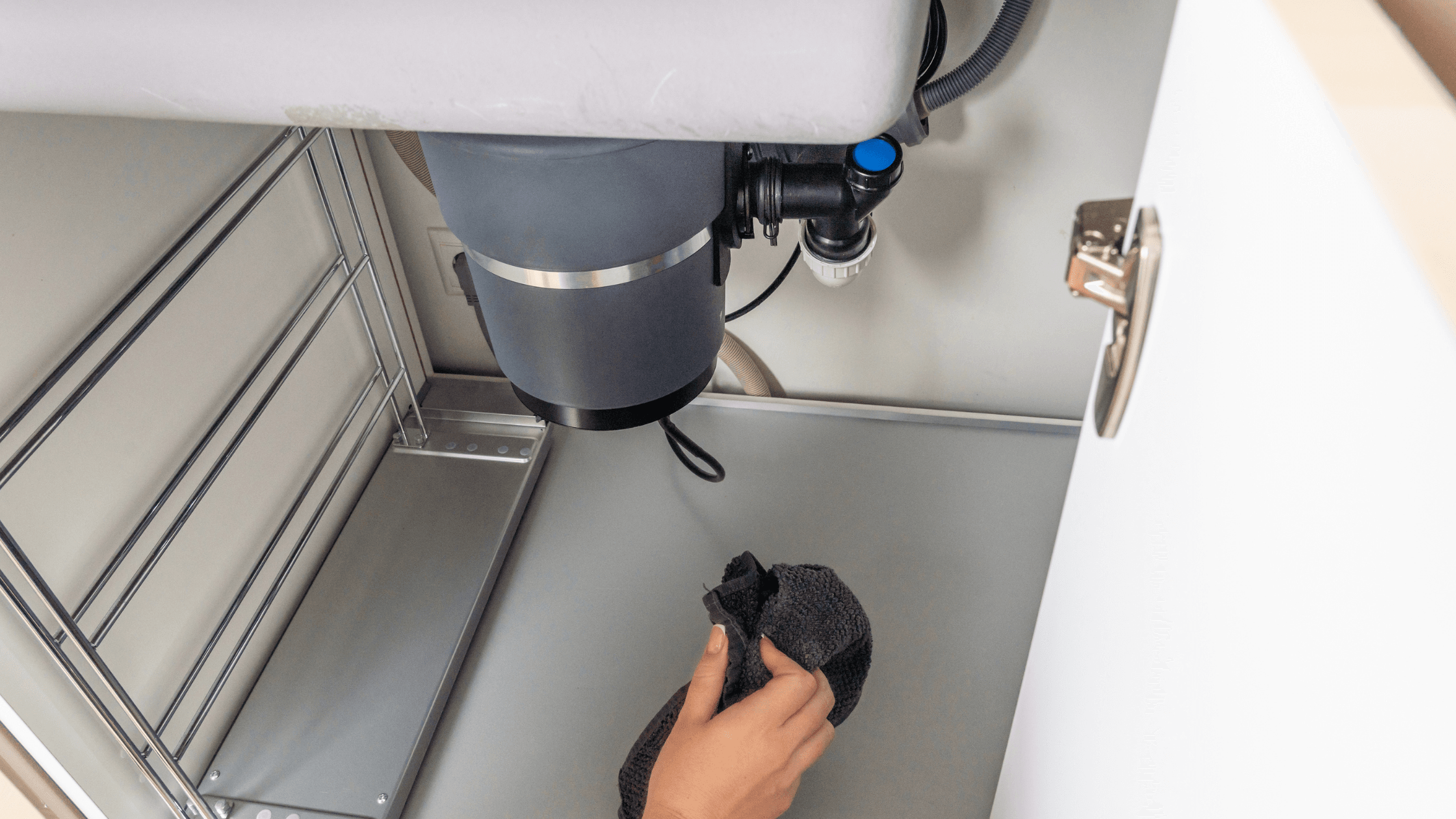Top Tips for Fixing a Leaking Waste Disposal Unit
Top Tips for Fixing a Leaking Waste Disposal Unit
Blog Article
The content listed below pertaining to Garbage Disposal Leaking From Bottom is absolutely remarkable. Check it out yourself and figure out what you think about it.

Garbage disposals are crucial kitchen home appliances that help in taking care of food waste effectively. However, a dripping garbage disposal can be an aggravating and unpleasant problem to take care of. The good news is, lots of leakages can be dealt with quickly with a few straightforward actions. In this article, we will certainly go over how to deal with a dripping waste disposal unit effectively.
Introduction
Waste disposal unit are installed under kitchen area sinks and are designed to shred food waste right into smaller sized items, permitting it to pass through the pipes system easily. While these gadgets are typically trusted, leakages can happen in time due to damage, loosened connections, or damages to the device.
Step-by-Step Guide to Repairing a Dripping Garbage Disposal
Turn Off the Power
Prior to trying any kind of repair work, ensure that the power to the waste disposal unit system is turned off to stop the danger of electric shock.
Find the Leak
Identify the specific place of the leakage and figure out the cause
Tighten Links
Use a wrench to tighten any kind of loosened connections in between the disposal device and the plumbing system.
Change Seals or Gaskets
If the leakage is because of used seals or gaskets, eliminate the old parts and replace them with brand-new ones.
Patching Fractures or Openings
For fractures or holes in the disposal device, use epoxy or a suitable patching product to seal the broken location.
Identifying the Source of the Leak
Prior to attempting to deal with a dripping waste disposal unit, it is essential to determine the resource of the leakage. This can normally be done via visual inspection or by carrying out basic tests.
Visual Examination
Evaluate the garbage disposal unit carefully for any type of indicators of water leakage. Pay close attention to locations around seals, gaskets, and connection factors.
Testing for Leaks
One method to evaluate for leaks is by running water with the disposal device and looking for any kind of noticeable indicators of leak.
Common Root Causes Of Leakages in Waste Disposals
Worn Seals and Gaskets
Seals and gaskets play a crucial function in protecting against water from dripping out of the garbage disposal. In time, these components can weaken, bring about leakages around the disposal unit.
Loose Connections
The links between the waste disposal unit and the plumbing system can end up being loose in time, creating water to leakage out throughout operation.
Fractures or Openings in the Disposal Unit
Physical damage to the waste disposal unit, such as cracks or openings in the real estate, can additionally result in leaks.
Tools and Products Needed for Fixing a Leaking Waste Disposal Unit
Prior to starting the fixing procedure, collect the required tools and materials, including a screwdriver, adjustable wrench, plumbing's putty, replacement seals or gaskets, and epoxy or patching product for fixing cracks or openings.
Testing the Garbage Disposal After Fixing
When the repair is full, test the garbage disposal by running water with it to make sure that the leak has actually been dealt with.
Preventive Maintenance Tips to Stay Clear Of Future Leakages
To avoid future leaks, it is important to execute routine maintenance on your waste disposal unit. This consists of keeping it clean, avoiding putting non-food items or hard objects down the disposal, and periodically checking for leaks or various other issues.
Final thought
To conclude, taking care of a dripping garbage disposal is a reasonably straightforward process that can be finished with standard tools and materials. By following the actions outlined in this post and practicing preventative upkeep, you can maintain your garbage disposal in good working problem and prevent pricey repair work in the future.
HERE’S HOW TO FIX YOUR GARBAGE DISPOSAL
WHAT TO DO IF SOMETHING IS STUCK IN YOUR GARBAGE DISPOSAL
If the impeller won’t turn, there’s probably something stuck in the disposal. It could be a steak bone or peach pit, although plumbers report pulling all sorts of inappropriate objects out of disposals, such as bottle caps or aluminum foil. Make sure power to the disposal is off, and look inside to see if you can see the source of the jam.
Never stick your fingers in a disposal. Pull out anything you see with tongs or pliers.
If the disposal still won’t work, it may be time to call a plumber or consider buying a new disposal. GEM Plumbing & Heating is here for all of your garbage disposal needs.
WHAT TO DO IF YOUR GARBAGE DISPOSAL DRAIN IS CLOGGED
Take everything out from underneath your sink and put a bucket or other container under your disposal to catch any water that drains out. Disconnect your disposal from the power supply. If it’s plugged into a wall outlet, unplug it. If it’s hardwired into an electrical box, go to the electrical panel and turn off the breaker for the disposal. Pour ¼ cup of baking soda into the drain, followed by ½ cup of white vinegar. Give the solution a few minutes to fizz and do its work. Look into the disposal with a flashlight to see if you can see an object that might be causing the clog. If you see it, remove it using tongs or pliers. MORE TIPS ON DEALING WITH A CLOGGED GARBAGE DISPOSAL
Never use drain cleaner in a garbage disposal. It can damage the plastic parts inside the disposal. You can also be splashed with the caustic liquid while working to clear the clog. Beware! Never stick your fingers into a garbage disposal. Trust us — not a good idea. In many instances, your dishwasher drains through your garbage disposal. This allows the disposal to grind any large food particles that may be drained out of your dishwasher. There are some jurisdictions, however, where the plumbing code prohibits such a connection. WHAT TO DO WHEN YOUR DISHWASHER DRAINS THROUGH THE DISPOSAL
Run some water in the sink so your plunger has at least a ½-inch of water to create a seal and plunge vigorously up and down several times. You may need to repeat this several times. Run hot water down the drain to clear any residue that remains.

Do you enjoy reading up on How to fix a pretty consistent leak from my garbage disposal? Write feedback directly below. We'd be glad to find out your reactions about this blog post. We are looking forward that you come back again in the future. Are you aware of somebody who is inquisitive about the topic? Why not share it. Many thanks for your time. Don't hesitate to come by our site back soon.
Call Today Report this page